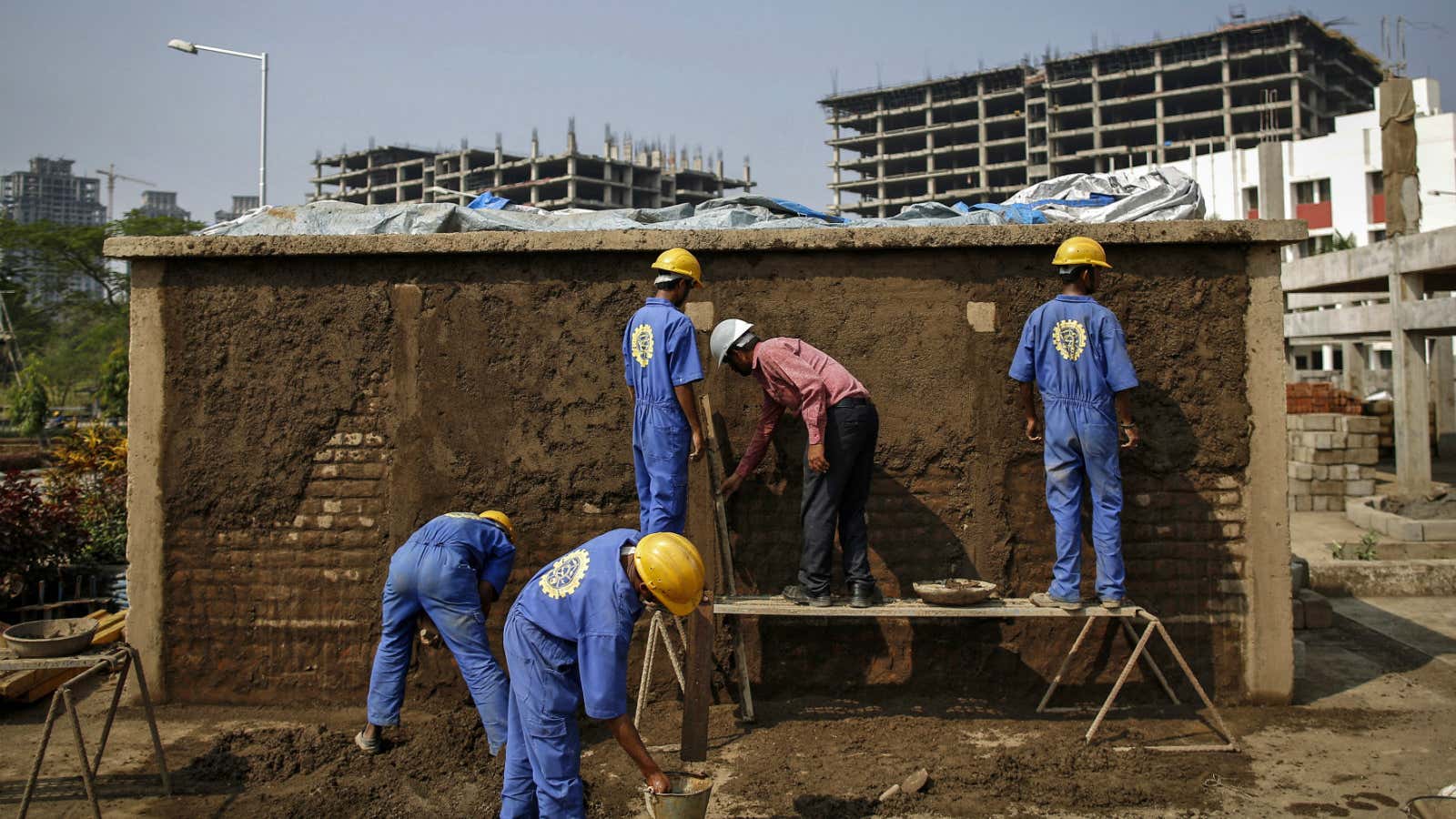Narendra Modi has opened the coffers to make millions of young Indians more employable.
In the last two weeks, the Indian prime minister’s cabinet has approved two major skill development schemes, involving a total cost of Rs22,000 crore ($3.3 billion). Such initiatives are critical for India’s future as the country will be home to the highest number of working-age persons—over one billion—by 2050, in the Asia-Pacific region.
Here are the broad details of the schemes:
- The cabinet on July 13 approved a Rs12,000-crore skill development plan under the Pradhan Mantri Kaushal Vikas Yojana (PMKVY) to train some 10 million Indians over four years. The skills will cater to domestic industries and also those “aligned to international standards for overseas employment in Gulf countries, Europe, and other overseas destinations,” the government said in a statement.
- On July 5, the cabinet cleared a Rs10,000-crore apprenticeship program to train 5 million people by 2020. “The scheme will catalyze the entire apprenticeship ecosystem in the country and it will offer a win-win situation for all stakeholders. It is expected to become one of the most powerful skill-delivery vehicle in the country,” a government statement said.
“This is a big step for us towards empowering the youth of our country and we are certain to strengthen the system and make training more effective with robust monitoring,” Rajiv Pratap Rudy, India’s skill development minister, said last week.
The push comes at a time when India is trying to reinvent itself as a manufacturing powerhouse, with Modi inviting global companies to set shop here. More industries mean more jobs, and if India doesn’t have a continuous supply of skilled labour, these companies might look at other bases.
And high-skilled labour seems to be a sticky issue in Asia’s third-largest economy. Most Indian engineering graduates aren’t equipped for jobs; some 93% of B-school graduates aren’t employable at all.
However, there are bigger problems that the government needs to address.
For one, such programs haven’t exactly been successful in the past.
Since its launch in July last year, the PMKVY has trained some 20,00,000 persons. Yet, only 81,978 of them got jobs. Many often leave the training program mid-way—something that education-focused NGO Pratham found in 2015. Some go back to their villages after training and others just stop mid-way, the findings said.
There were other loopholes too.
The Standard Training Assessment Reward (STAR) scheme, launched by the UPA government didn’t have any placement record for the almost million people it trained.
Additionally, an investigation by the Outlook magazine in August 2015, showed that the real benefits from the investments made into the National Skills Development Corporation (NSDC)—a public private partnership that provides funds to organisations that provide skills training—are derived by corporates rather than job seekers. The money provided by the NSDC went to private skills trainers, often associated with big corporates, but there were hardly any outcomes, the investigation found.
The entire Skill India program also largely ignores the terrible state of school-level education in the country. Primary school students can’t perform basic arithmetic problems or even read text that they should be able to.
In its proposals for a new national education policy, the government has pointed out these grim realities, but there hasn’t been any big-bang announcement to reform the country’s education system.
